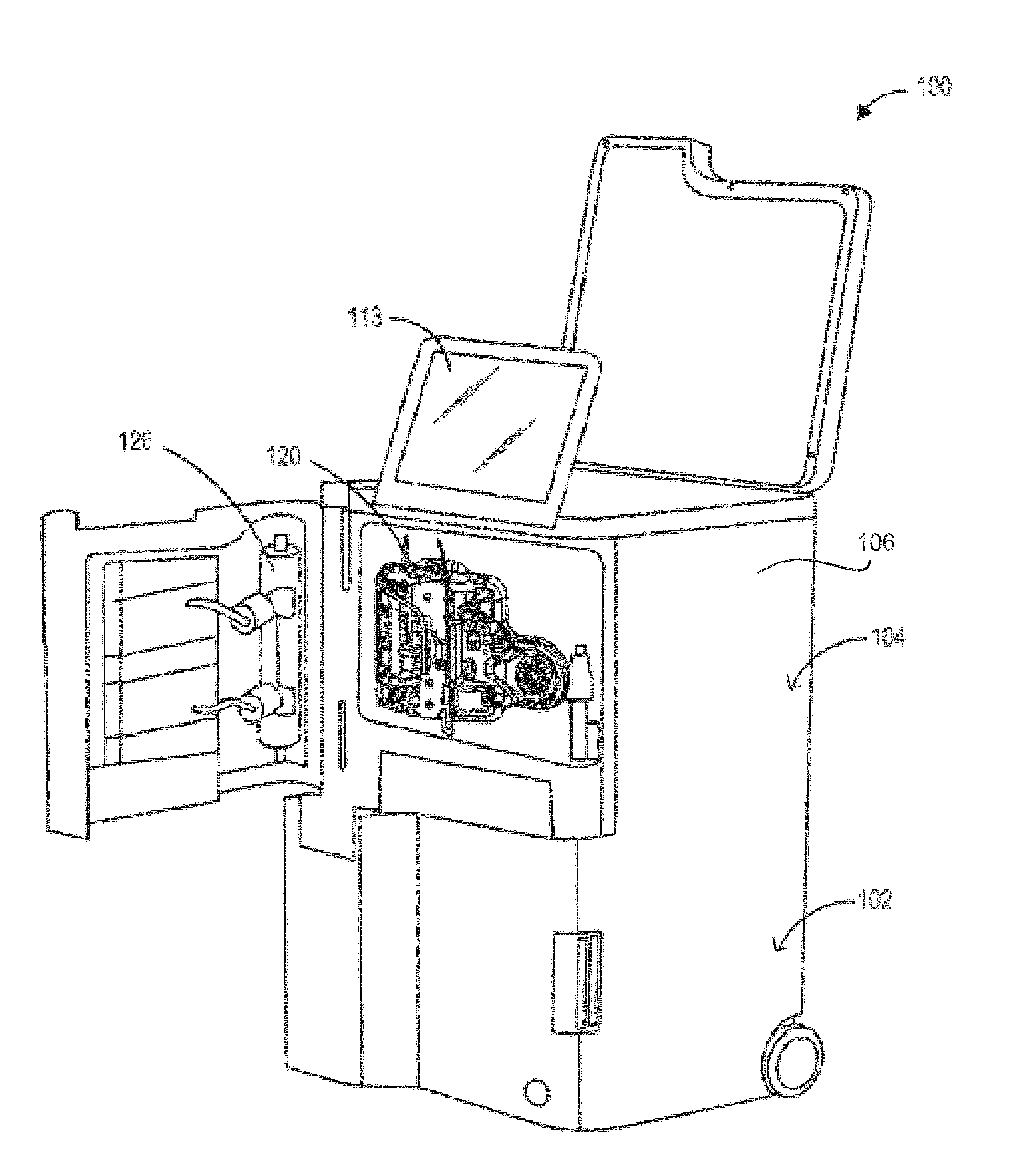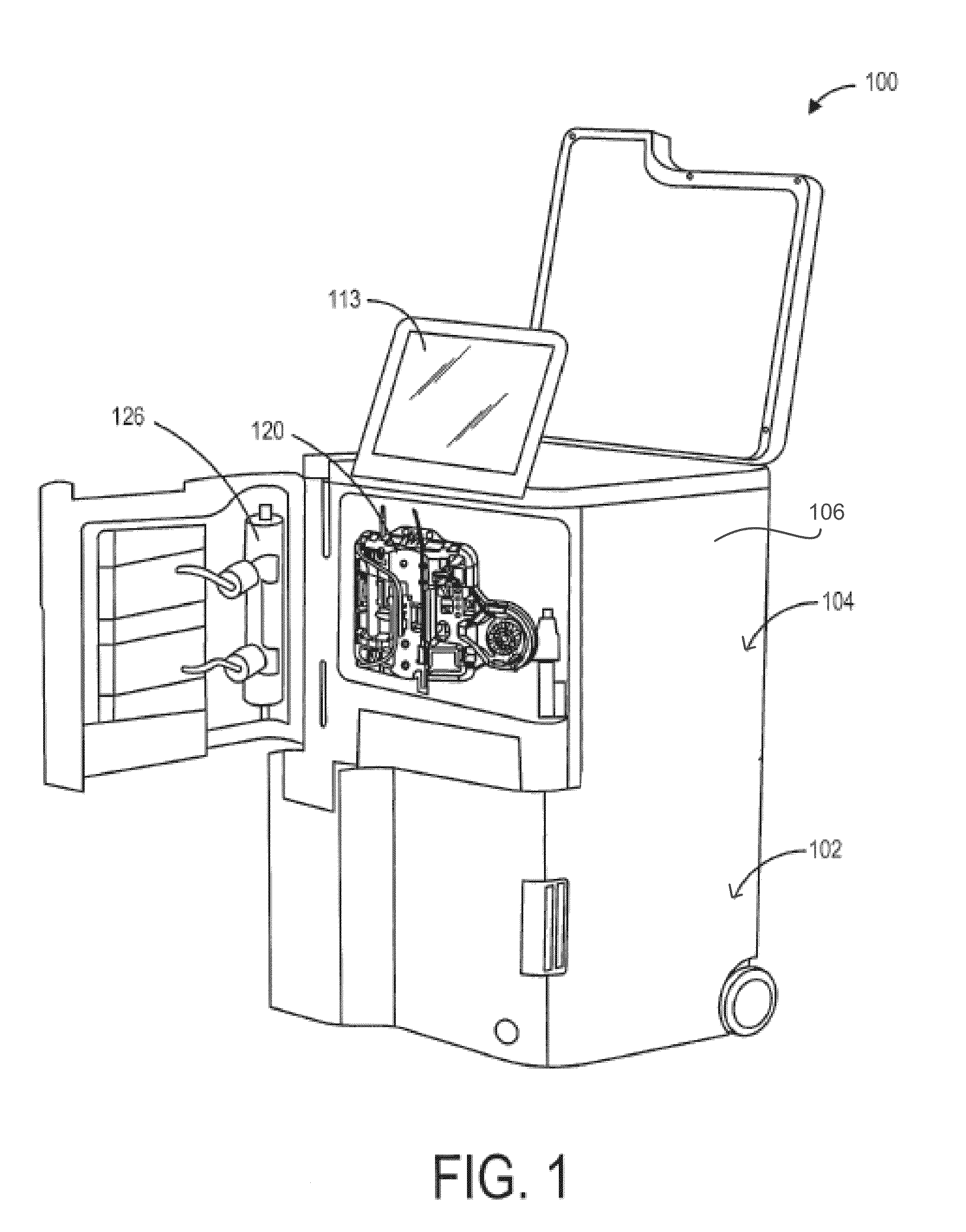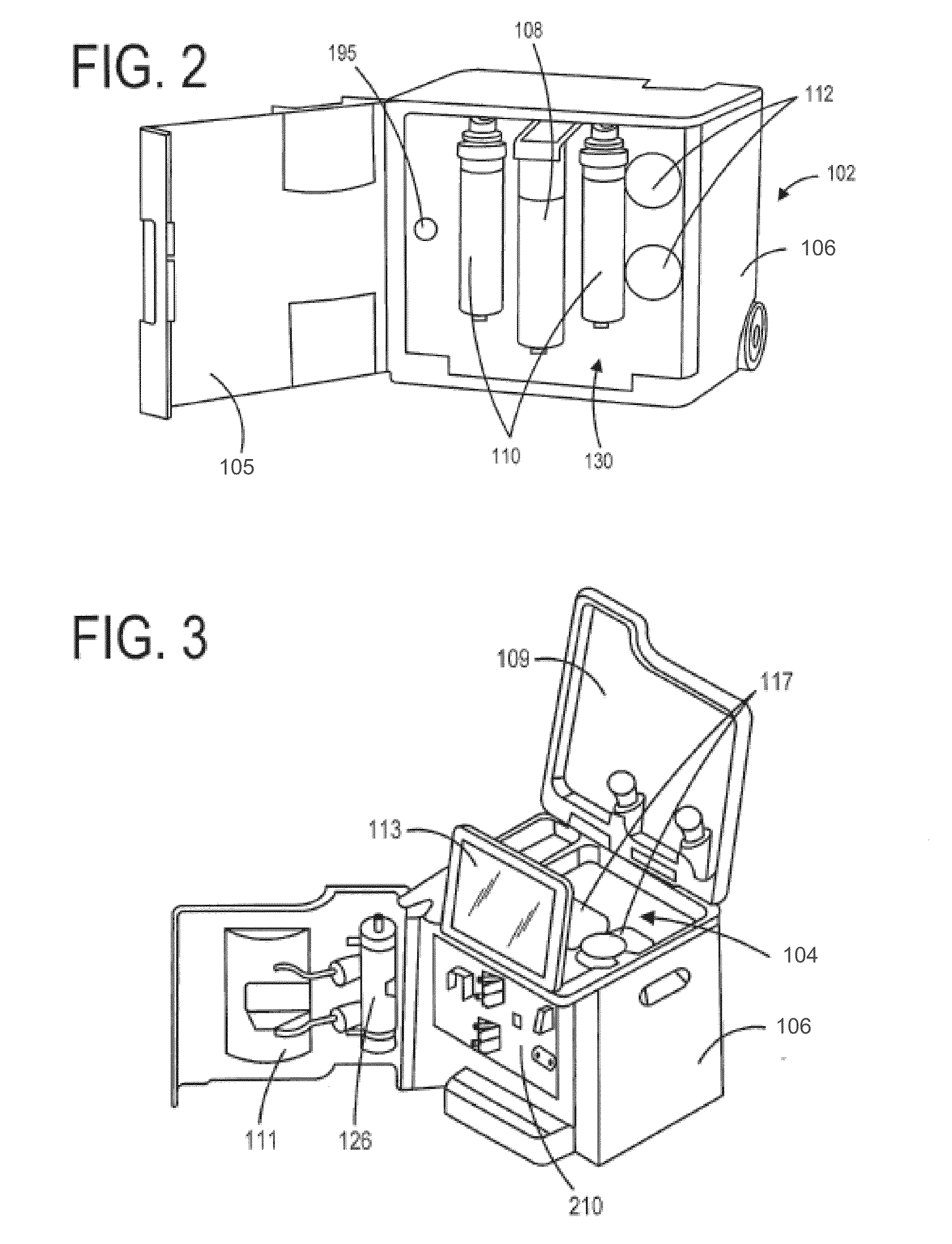Dialysis system and methods
a technology of dialysis system and dialysis method, which is applied in the field of dialysis system, can solve the problems of patient backflow, patient fatigue, and patient uncompromising schedule, and achieve the effect of preventing backflow of blood
- Summary
- Abstract
- Description
- Claims
- Application Information
AI Technical Summary
Benefits of technology
Problems solved by technology
Method used
Image
Examples
Embodiment Construction
[0074]This disclosure describes systems, devices, and methods related to dialysis therapy, including a dialysis system that is simple to use and includes automated features that eliminate or reduce the need for technician involvement during dialysis therapy. In some embodiments, the dialysis system can be a home dialysis system. Embodiments of the dialysis system can include various features that automate and improve the performance, efficiency, and safety of dialysis therapy.
[0075]In some embodiments, a dialysis system is described that can provide acute and chronic dialysis therapy to users. The system can include a water purification system configured to prepare water for use in dialysis therapy in real-time using available water sources, and a dialysis delivery system configured to prepare the dialysate for dialysis therapy. The dialysis system can include a disposable cartridge and tubing set for connecting to the user during dialysis therapy to retrieve and deliver blood from ...
PUM
| Property | Measurement | Unit |
|---|---|---|
| time | aaaaa | aaaaa |
| pressure drop | aaaaa | aaaaa |
| flow rate | aaaaa | aaaaa |
Abstract
Description
Claims
Application Information
 Login to View More
Login to View More - R&D
- Intellectual Property
- Life Sciences
- Materials
- Tech Scout
- Unparalleled Data Quality
- Higher Quality Content
- 60% Fewer Hallucinations
Browse by: Latest US Patents, China's latest patents, Technical Efficacy Thesaurus, Application Domain, Technology Topic, Popular Technical Reports.
© 2025 PatSnap. All rights reserved.Legal|Privacy policy|Modern Slavery Act Transparency Statement|Sitemap|About US| Contact US: help@patsnap.com



